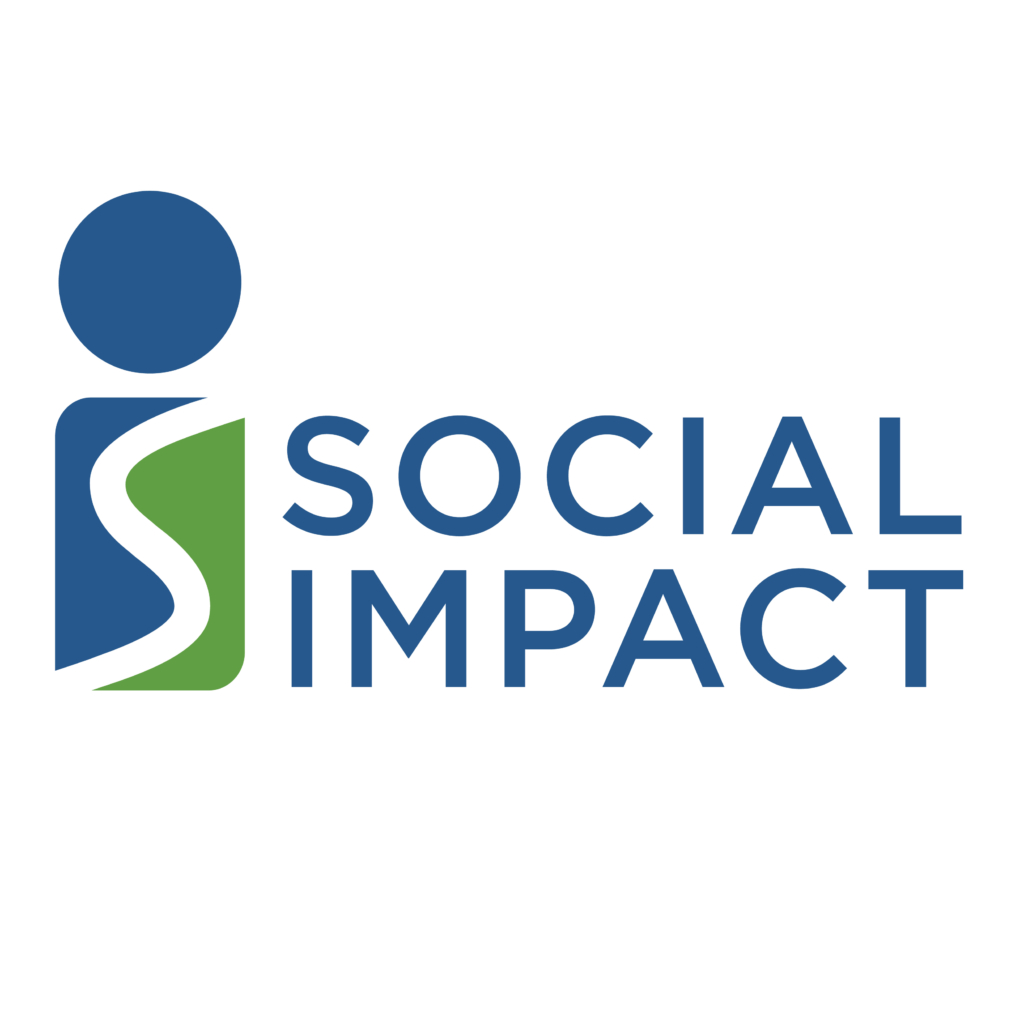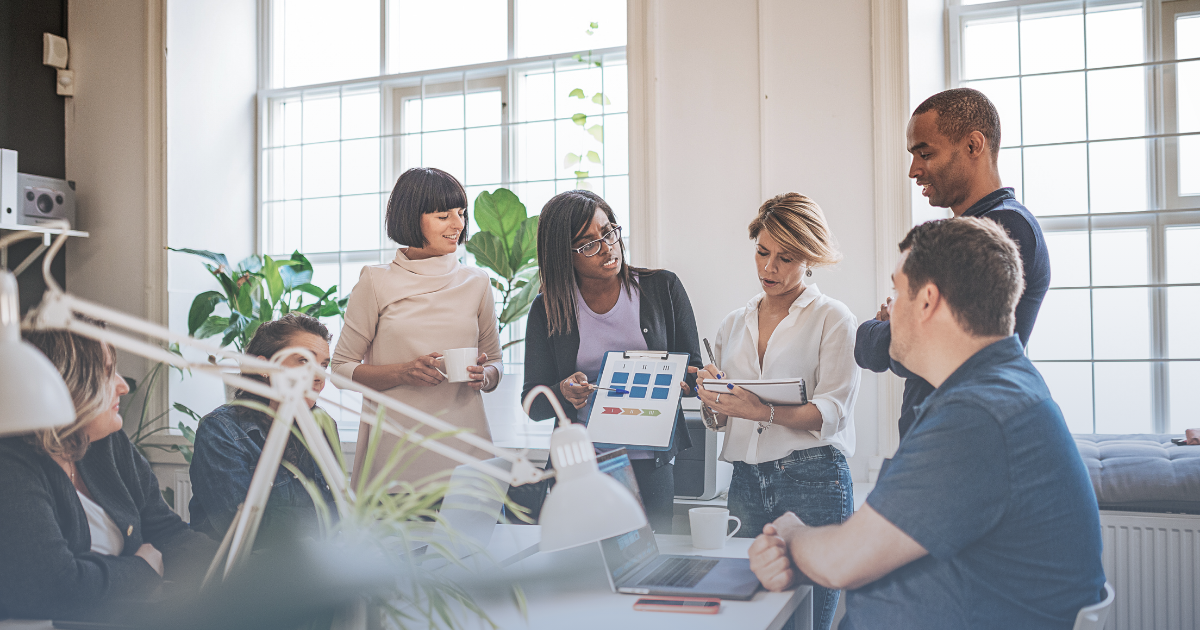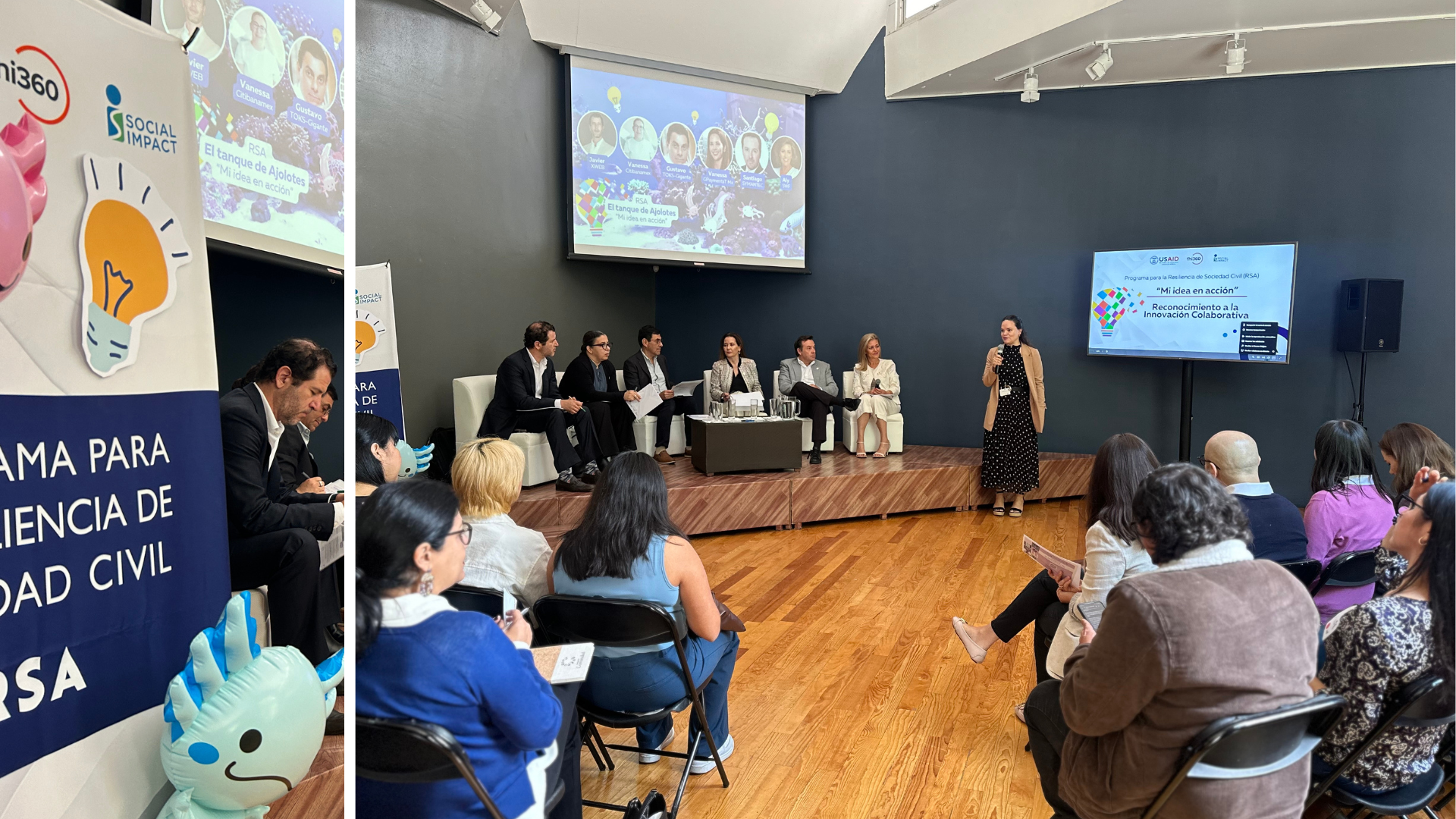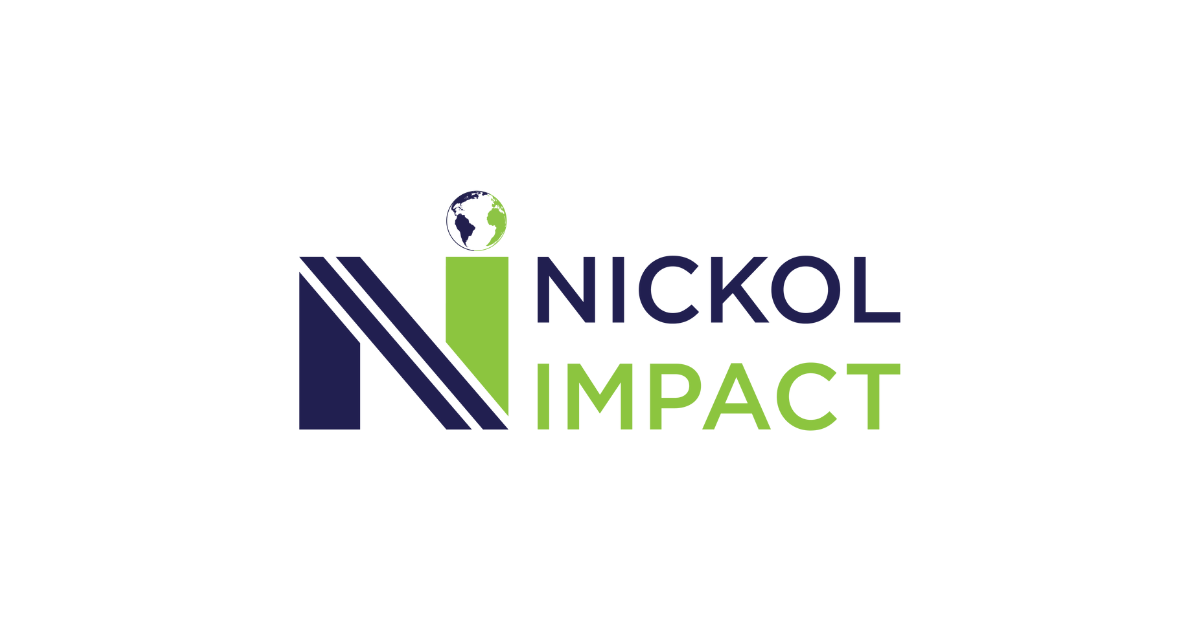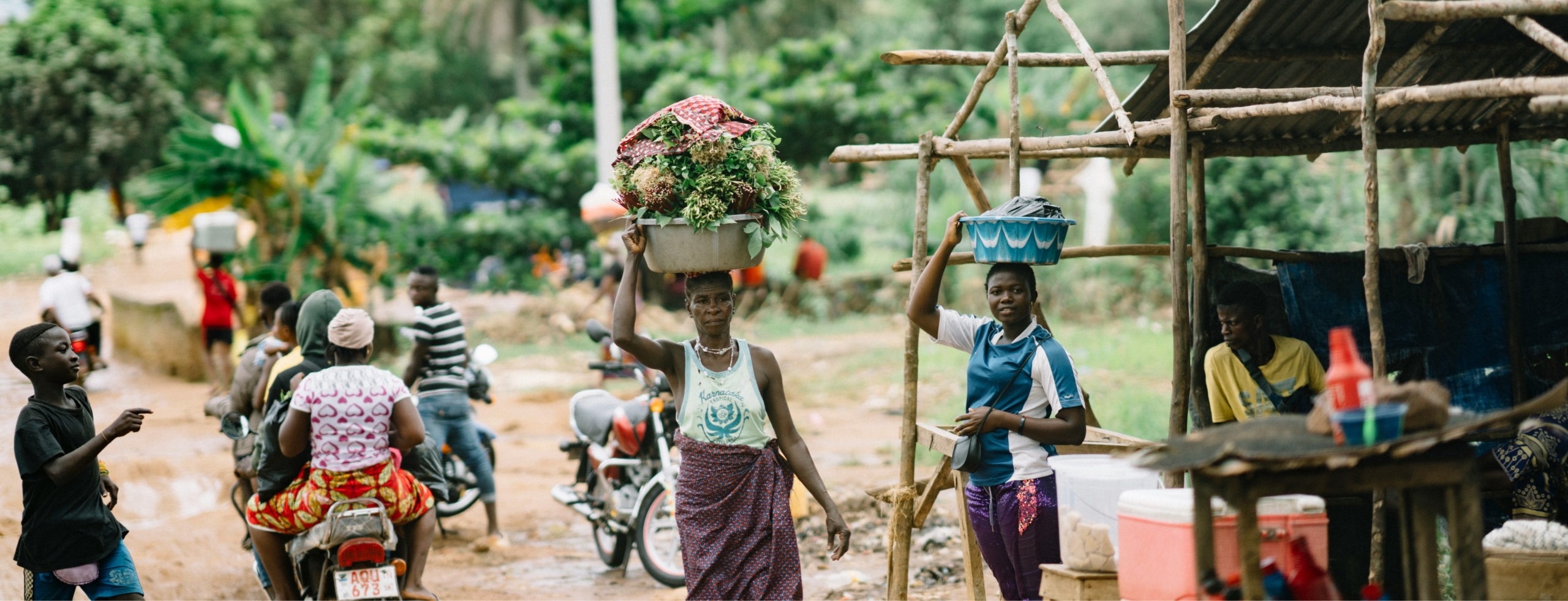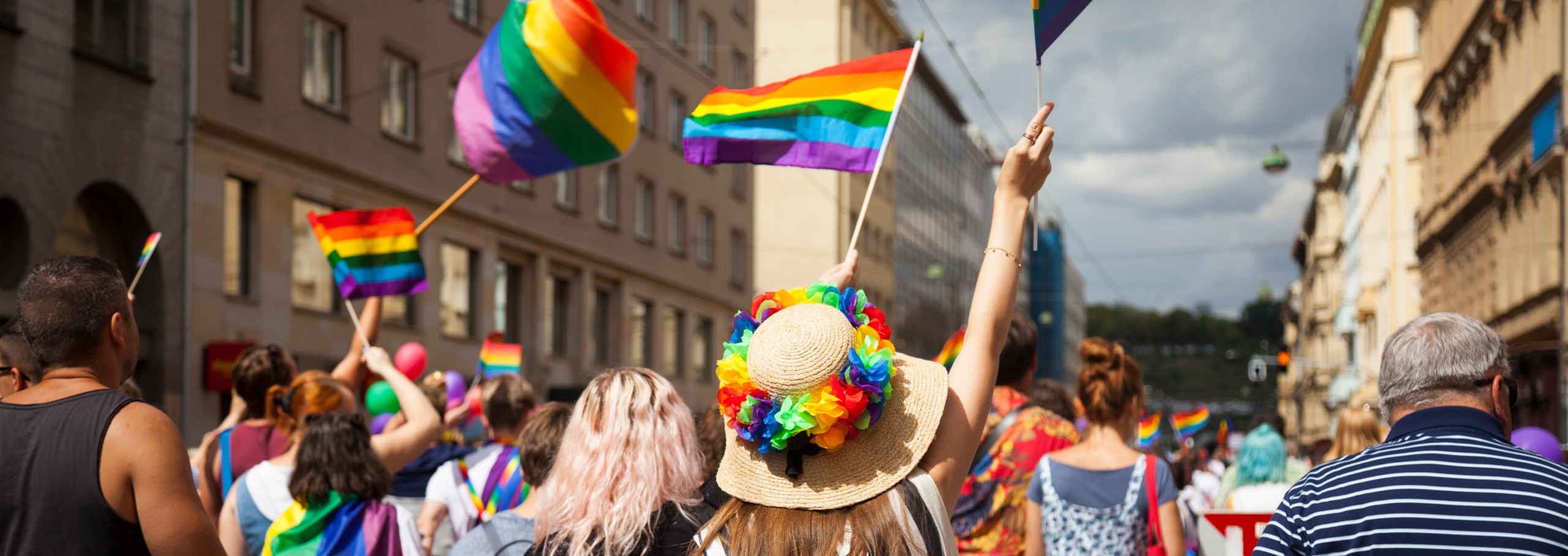“There is no power for change greater than a community discovering what it cares about”. Mary J. Wheatly, Berkana Institute
In Mexico, motivating a sense of community has become a particularly critical issue in recent years, especially for civil society organizations (CSO), as they play a fundamental role in the development of social cohesion, democracy, and social participation.
Organizing CSOs into communities has been done at Social Impact (SI) for several years. It began with USAID/Mexico’s Civil Society Activity program, where we used a participatory approach, with Social Innovation Labs1 as an inspiration, to build what we called the “Learning Communities”. Through these Learning Communities, we sought to promote collaboration, local ownership, and a systemic perspective (Storck & Huerta, 2022).
To foster continuous learning, we applied the Collaboration, Learning, and Adapting approach to the Learning Community methodology after the conclusion of the Mexico CSA project. The resulting improved methodology is now being used in the new USAID/Mexico Resilient Civil Society Activity (RSA, 2021-2025), a project led by FHI360 in collaboration with SI and the International Center for Not-For-Profit Law (ICNL).
The main objective of RSA is to strengthen the resilience of civil society organizations (CSOs) in a changing and challenging context. This is achieved by strengthening the institutional capacities of organizations, developing and improving skills to build networks, working collaboratively with actors from different sectors, and increasing the recognition of the role that CSOs play and their contributions to the country. Here, with a particular emphasis on building networks and collaborative work, is where the Learning Communities are framed: a space in which a group of CSOs (from different funds such as Ambassador Response Fund, New Partnership Fund and Rainbow Fund) collaborate and interact with each other and with other sectors to increase the impact and sustainability of their work by building from local knowledge and impacting their Local System as a whole.
The methodology of the Learning Communities is called Resiliency Lab, which was built on the Social Innovation Design Thinking, lessons learned from CSA (after applying CLA), as well as results from a co-creation process and dialogue with the private and academic sector. What do we offer in our Learning Communities? As you can see in the following diagram, Resilience Labs incentivize participatory and innovative spaces where peer-to-peer learning and sharing resources and tools are promoted. Additionally, we use these spaces to contribute to and strengthen the well-being and mental health of those who put their heart into these organizations.
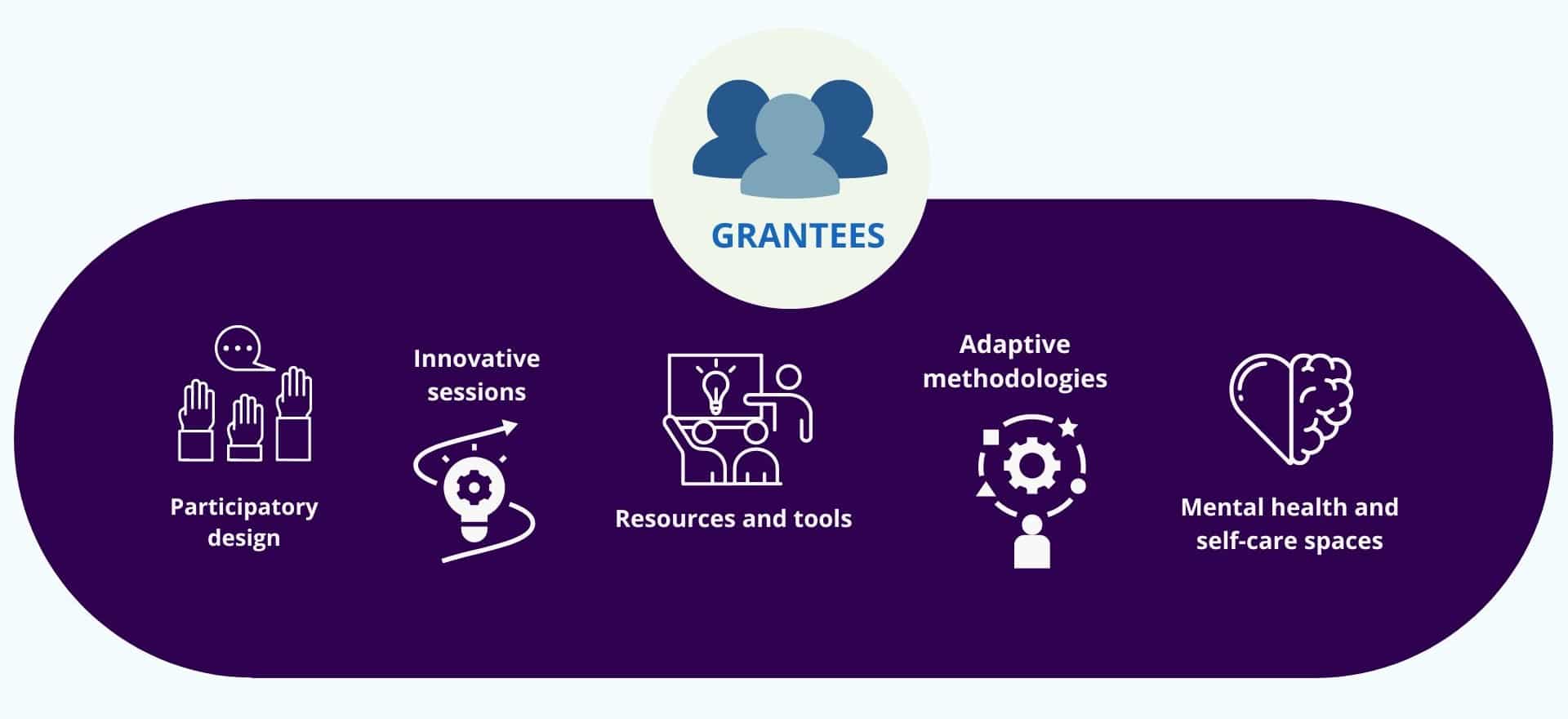
After concluding the implementation of the Resiliency Lab methodology with the first group of the Ambassador Response Fund (ARF), and in preparation for the first Learning Community with the New Partnership Fund (NPF), the SI team again used the CLA (Collaborating, Learning, and Adapting) approach to reflect on the best practices of the ARF1 (Ambassador Response Fund 1). SI identified areas that can be improved, including lessons learned as a critical part of the process. For example, the team has determined that design thinking and people-centered design are effective methodologies to facilitate collaborative sessions where shared learning is encouraged, and where empathy and common goals and interests are essential to creating a community.
Over the course of our work, the Resiliency Lay has also seen CLA-led improvement through iteration. Version 1.0 of the Resiliency Lab included six steps: 1) Empathize, 2) Define, 3) Ideate, 4) Prototype, 5) Pilot, and 6) Evaluate (the five steps of the Design Thinking methodology with the addition of “evaluate” as a sixth step). As part of the CLA process and having had the opportunity to test the Resiliency Lab cycle, the team decided to incorporate “Strengthening” as a new step to the Resiliency Lab cycle creating a Version 2.0. The first six steps under Version 1 were practical for the ARF 1.0 group. However, adding an additional step will enhance the impact of the Learning Community. It will closely relate to CSO’s OPI4 results, and incorporate critical aspects of organizational resiliency, such as effective communication strategies, participatory methodologies for monitoring, evaluation, and learning, and fundraising into the core content of the Resiliency Lab sessions.
The following diagrams present the first model of the Resiliency Lab used for the ARF1, and the second model, now called Resiliency Lab 2.0 after the CLA redefinition:
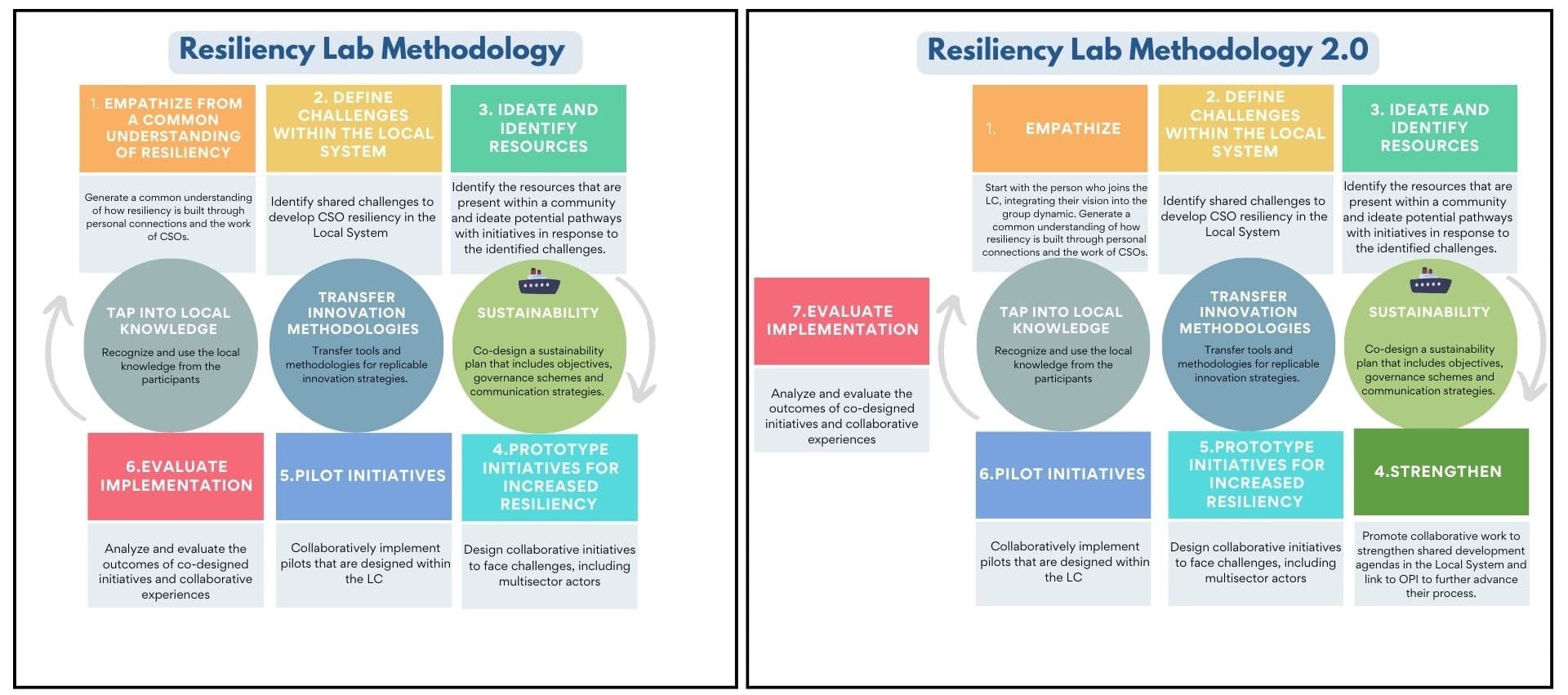 An important lesson learned from the process with the ARF1 is that “building” a sense of community must develop organically and that it will not always be among the priorities of organizations. Additionally, through evaluation and feedback instruments, organizations have shared that what they value most is spaces for peer-to-peer learning and receiving and sharing tools and resources that allow them to continue their strengthening process. Another significant result is that although the Learning Communities are content-intense, they enable CSOs to take a break from their everyday work and recharge, returning to their organizations with new learnings and connections.
An important lesson learned from the process with the ARF1 is that “building” a sense of community must develop organically and that it will not always be among the priorities of organizations. Additionally, through evaluation and feedback instruments, organizations have shared that what they value most is spaces for peer-to-peer learning and receiving and sharing tools and resources that allow them to continue their strengthening process. Another significant result is that although the Learning Communities are content-intense, they enable CSOs to take a break from their everyday work and recharge, returning to their organizations with new learnings and connections.
As the next cycle begins with the New Partnership Fund, we are working closely with the RSA Grants and Capacity Development teams to better understand each organization’s context and interests. This has proven to be an effective strategy to incorporate the CLA approach to find out what these teams have learned about CSOs through the due diligence process. This information has been extremely valuable to the design of the next Learning Community.
Without a doubt, the CLA approach is a useful tool that we will continue to develop. Once we conclude the Learning Community cycle with the NPF1, we will adapt and adjust the Resiliency Lab methodology according to what we learn and implement it with our new groups (ARF2 and Rainbow Fund).
“Learning Communities are very interesting and useful, as they allow us to learn about other experiences, exchange good practices and challenges, motivate us, and renew us; they can even lead to concrete alliances.”
-Learning Community participant
References
Storck, E. & Huerta, M. (2022). Supporting Localization Through Learning Communities. Social Impact. Retrieved from: https://socialimpact.com/supporting-localization-through-learning-communities/
______
Author:
Ana Paula Sandoval works as the Learning Community and Collaborator Specialist for the USAID/Mexico Resilient Civil Society Activity, where she has contributed to developing a methodology that encourages a sense of community among CSOs in Mexico. During her work experience, she has led research projects supported by international funding, developed methodological tools for community work, and supervised their execution in the field.

